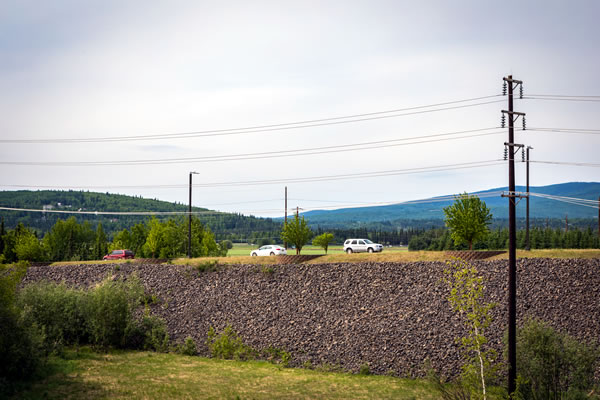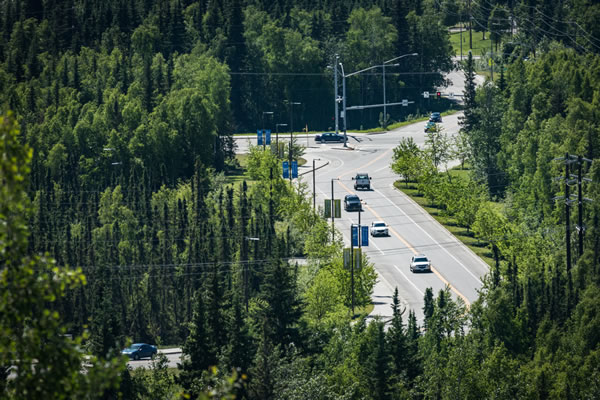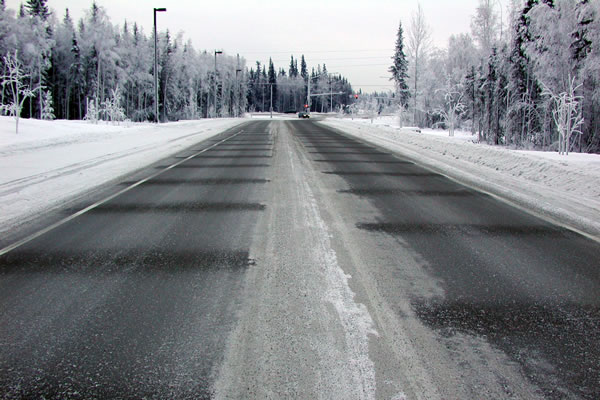Keeping a road bed frozen



When planning began on a new access road to the University of Alaska Fairbanks’ Troth Yeddha' campus in 2001, its designers figured they needed a different approach.
The proposed road would stretch across a layer of barely frozen ground, where even the slightest temperature increase would make it sink and buckle. That exact problem had happened beneath a previous access road, causing it to fall away from a bridge near campus.
With that in mind, UAF engineers and road designers with the Alaska Department of Transportation decided to take unprecedented measures to keep that permafrost frozen. Their experiment in road planning has turned into a lasting success story, with some of its elements borrowed in projects throughout the Interior.
Much of Thompson Drive is built on a huge pile of coarse, grapefruit-sized rocks that allow air circulation beneath the roadway. Warm air rises and cool air sinks. Gas-filled tubes, called hairpin thermosyphons, were also placed horizontally beneath a portion of the asphalt surface. The refrigerant inside evaporates in the bottom portion and condenses when it travels as a gas to the top. Each thermosyphon helps super-cool the permafrost below.
Those previously unproven design elements, suggested by UAF engineers Doug Goering, John Zarling and Billy Connor, have kept the permafrost beneath Thompson Drive stable, allowing the road to remain flat and smooth. In the past decade, DOT has used the previously unproven features in other roads that are vulnerable to thawing.
“In my mind, Thompson Drive is a documented success,” said Jeff Currey, the DOT Northern Region materials engineer.
More information:
